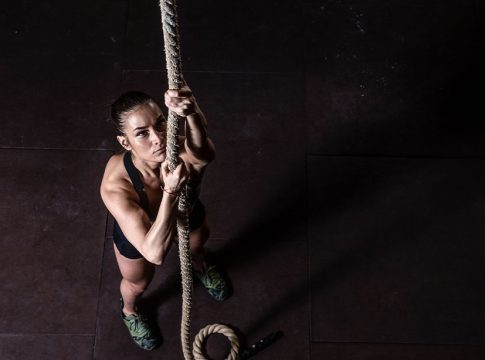Elevate Your Workout: The Revitalizing Benefits of Rope Climbing
Remember the daunting sight of the rope in gym class? That knotted behemoth you were dared to scale? For many, it was a cringe-worthy challenge that sparked a fear of heights and a reality check on upper body strength. Fast forward to today, and rope climbing has transformed from a childhood nightmare into a powerhouse training tool. If you’re looking to spice up your fitness routine, it’s time to embrace this unique and effective exercise.
Why You Should Climb Rope
Build Grip Strength and Endurance
One of the most underrated benefits of rope climbing is its remarkable ability to enhance grip strength. Grip strength is not just about being able to open stubborn jars; it’s an essential factor for overall health. Studies suggest a strong grip correlates with longevity and better overall strength. Training your grip in a vertical manner—like during a rope climb—also promotes dexterity that can enhance performance in sports like tennis, golf, and baseball.
Develop Pulling Power
Rope climbing is primarily a pulling exercise, targeting your lats, biceps, and core. Unlike standard pull-ups, where your hands remain fixed, rope climbing involves letting go of one hand to continue your ascent. This not only builds substantial muscle but also challenges your grip and pulling muscles in an innovative way.
Full-Body Activation
Climbing a rope isn’t just about your arms; it’s a full-body workout. Your core engages continuously, and proper technique encourages the use of your legs. As an added bonus, speed climbing elevates your heart rate, serving as an excellent cardiovascular workout.
Mental Toughness and Confidence
Rope climbing is not just physically demanding; it’s a mental challenge that builds resilience. Overcoming the discomfort of hanging from a rope—and perhaps a fear of heights—can significantly boost your confidence.
Safety First
Before you leap into your rope climbing adventure, make sure you have a crash mat below for safety. This exercise is strenuous on the body and requires careful attention to limits. Start slow and aim for progression rather than perfection.
Getting Started with Rope Climbing
If you’re new to this dynamic exercise, consider these beginner-friendly adaptations:
-
Seated Rope Pull-ups: Sit cross-legged under the rope. Reach high to grab it and pull your chin above your hands while minimizing leg assistance. Lower back down with control and repeat.
- Standing Rope Pull-ups: Once you’re comfortable with seated pull-ups, try standing. Reach up and perform pull-ups while engaging your entire body.
Progressing Your Rope Climbing Skills
Once you’re comfortable, try these progression challenges:
- Knotted Rope Climbing: Use knots to assist leg engagement and provide rest.
- Legless Rope Climbing: Test your upper body strength by climbing without leg assistance.
- Weighted Rope Climbing: Add a weight vest to elevate the challenge.
- Speed Climbing: Race up the rope for a cardiovascular boost.
- Thick Rope Climbing: Use a thicker rope to intensify grip training.
Takeaway
Rope climbing offers unique benefits that go beyond nostalgia from gym class. It’s an effective exercise for grip strength, pulling power, and mental resilience. Whether you’re a beginner, a busy professional, or a seasoned fitness enthusiast, incorporating rope climbing into your routine can yield dramatic improvements. So, gear up and climb—your fitness journey is about to gain new heights!

Covers wellness, nutrition, mental health, and daily life tips.
Bio: Talia brings a background in health journalism and holistic living to help readers live better, one tip at a time.

